Hi Susun,
I’ve been having breast pain / tenderness on and off for several months. Are there any good foods and exercises I can do to help keep my hormones balanced and my breasts healthy and cancer free? Thank you for any help you can give.
Susun Weed’s response:
The following tips may amaze you, since the actions and foods they suggest run counter to many alternative views of cancer prevention. They are supported with strong research, however—from the lab, with animals, and in long-term human studies. Thus, each of these tips has a solid scientific basis, unlike the assertions made by those intent on selling you their opinions and products.
Embarking on even one of these suggestions will definitely lower your risk of breast cancer. Using them all is even better. And as a special treat, I have added three extras. Look for lots more tips for keeping your breasts healthy in my book Breast Cancer? Breast Health! The Wise Woman Way, recommended by many oncologists and breast health specialists including Dr. Susan Love. And please visit my special breast health website: www.breasthealthbook.com.
1. Be more active.
Evidence continues to accumulate that a vigorous lifestyle is one of the best ways to cut breast cancer risk. A study of 20,624 Norwegian women found those who exercised or worked out regularly cut their breast cancer risk by 72%. (NEJM, 5/1/1997) For breast health I walk every day, take a weekly yoga class, and do tai chi twice a week.
2. Eat more unrefined seed foods.
All seeds provide phytoestrogens. Women who eat the most phytoestrogenic foods are four times less likely to be diagnosed with breast cancer than those who eat the least. “No study has shown a degree of risk reduction similar to that found for phytoestrogens . . .” (Lancet, 10/4/1997)
Whole grains such as wheat, rice, corn, kasha, millet, and quinoa are unrefined seed foods. Beans such as lentils, black beans, pinto beans, lima beans, and chickpeas are unrefined seed foods. Nuts including peanuts, walnuts, almonds, and pecans are unrefined seed foods. And edible seeds such as sesame, sunflower, and pumpkin are unrefined seed foods. Fruits and vegetables that are eaten with their seeds—such as strawberries, blueberries, raspberries, kiwi fruit, summer squash, tomatoes, and cucumbers—count as unrefined seed foods. Even seeds used as seasonings count, such as cumin, coriander, caraway, anise, and dill seeds.
For breast health, I have replaced all refined carbohydrates—including white rice and white/unbleached flour products such as pasta, bread, cookies, crackers, pretzels, bagels, donuts, and cakes—with whole grain products.
3. Eat less vegetable oil; increase animal fat, especially from dairy products.
“Diets high in corn oil leave animals especially vulnerable to chemically induced cancers” say researchers. (Science News, 6/24/89; 10/2/99) Frightening as this statement is, it is not true only of corn oil but of all vegetable (or seed) oils including those made from soy, sesame, sunflower, cottonseed, flax, and hemp.
If you are dubious about eating more animal fat and dairy products to reduce breast cancer risk, consider this landmark study reported in the Archives of Internal Medicine (1/12/1998). To determine if food affected breast cancer risk, the diets of 61,000 Swedish women between the ages of 40-76 were followed for four years. The results? For every 5 grams (about a teaspoonful) of vegetable oil consumed per day, breast cancer risk increased by 70%. In contrast, for each 10 grams of fat from meat and dairy products in the daily diet, breast cancer risk was decreased by 55%.
Another study, begun in the early 1970s, followed 4000 Finnish women’s diets for 25 years. Results recently released found that those who “drank the most milk had only half the breast cancer risk of those who drank the least.”
American researchers agree. According to a report in International Journal of Cancer (2001), women who drank milk as children and continued drinking it as adults had half the rate of breast cancer of non-milk drinkers. (Yes, I do buy organic milk, but the studies used regular supermarket milk.)
Why? Galactose, the primary sugar in milk, slows ovarian production of estradiol, a cancer-promoting hormone. Additionally, milk is rich in CLA (conjugated linoleic acid), a fat known to suppress brest tumors in animals.
For breast health I use yogurt, cheese, milk, butter, and olive oil daily, and eat meat occassionally. Remember that olive oil is pressed from a fruit, not a seed. Women whose diets are high in olive oil, and who eat meat and dairy products regularly, have the lowest rates of breast cancer in the world. (Journal of the National Cancer Institute, 1/18/1995)
4. Eat less tofu and soy beverage; eat more miso and tamari.
While it is true that if you begin eating soy foods as a child and continue throughout puberty the breast tissues you create during your adolescense will be highly resistant to cancer until after menopause. However, if you begin eating unfermented soy (tofu, soy milk, and the like) after puberty, your risk of breast cancer increases. (Science News, 4/24/1999)
The active ingredient in soy—isoflavone—when given to breast cancer cells in petri dishes causes them to grow rapidly. (Extracts of dong quai and licorice have a similar effect.)
Miso and tamari—fermented soy foods—are the exceptions. Both are strongly cancer preventative, no matter when you start eating them. Animals studies have found both miso and tamari highly effective in preventing cancer, even in mice genetically programmed to get breast cancer. And the more you eat, the more you lower your risk of cancer.
For breast health, I use miso and/or tamari every day. I occassionally eat tofu or edemame. I drink no soy milk, and eat no other soy products of any kind.
5. Eat foods rich in antioxidants; avoid supplements of vitamins C and E.
A diet that contains plenty of foods rich in antioxidants definitely lowers breast cancer risk. But supplements seem to do the opposite.
Doctors in Stockholm observed that, among breast cancer patients, treatment failures were higher for women taking vitamin E supplements—and the failure rate increased with dose. Studying this effect, researchers found that the anticancer benefits of fish oils “disappeared when [we] gave . . . antioxidant vitamins. In fact, when mice with breast cancer were given vitamin E supplements “the more we gave them, the bigger their tumors grew.” The authors conclude that vitamin E supplements “preferentially protect a cancer and even aid its spread.” (Science News, 4/29/1995 and 7/15/1995)
Supplements of vitamin C (synthetic ascorbic acid) are poorly used by body tissues. But cancer cells seem to thrive on it. (Cancer Research, 9/15/1999) One new “chemotherapy” links a lethal form of zinc to an ascorbic acid molecule; when the cancer eats the ascorbic acid, the zinc is set free to kill the cancer cell.
For breast health I eat 5-7 servings of dark green and bright red/orange foods daily.
Besides being active, choosing a diet high in phytoestrogens, eating one or more servings of dairy products daily, using miso and tamari regularly, and avoiding vitamin supplements, here are three more things you can do to help prevent breast cancer:
6. Sleep in the dark.
Exposure to light at night increases the risk of breast cancer. The Journal of the National Cancer Institute (8/17/2001) reports that chronic suppression of melatonin—an anti-cancer hormone made only in the dark—increases breast cancer risk by at least 36%.
For breast health be certain there is no light (except from the moon) in the room where you sleep. Not even a night light. Not the light from a clock. Not the little lights on electronics.
7. Drink red clover blossom infusion.
Red clover is a potent anticancer herb. It contains ten times more phytoestrogens than soy, and in a more complete form. I have seen it clear in situ cancers and precancerous polyps hundreds of times. Since many breast cancers take 7-10 years to become big enough to be seen on a mammogram, I drink a quart of red clover infusion every week and skip the mammogram.
To prepare the infusion: place one ounce, by weight (about a cup by volume), of dried red clover in a quart canning jar. Fill the jar to the top with boiling water and lid tightly. Let steep for four hours or overnight. Strain and drink. Refrigerate excess and drink within 24-36 hours.
For breast health, I drink red clover infusion regularly.
8. Eat seaweed as a vegetable.
If the long-lived and cancer-free Japanese have a secret, it is seaweed, not soy. A sprinkling of kelp as a seasoning is nice, and so are nori rolls—but neither does much to prevent cancer. For that we must eat seaweed as a vegetable—at least a half-cup serving per week. Wakame, kombu, kelp, and alaria are especially effective, but sea palm fronds, hijiki, nori, and dulse may be used on occasion.
There is a rich variety of seaweeds available in Chinese grocery stores, health food stores, and by mail. Seaweed recipes are available in many books (including my herbal Healing Wise).
These eight tips—five easy ones and three more difficult ones—will vastly increase your chances of living to be a wild, wise old woman with healthy breasts. That’s the Wise Woman Way the world round.
Green blessings, Susun Weed
photos: Wise Woman Spiral © iStockphoto.com / Chuck Spidell | Balance © 2006 Suzanne Cheryl Gardner
Dandelion oils (Taraxacum officinale)
Dandelion has a special affinity for breasts. Regular use of dandelion flower oil promotes deep relaxation of the breast tissues, facilitating the release of held emotions. Applied regularly to the entire breast area, glowing golden dandelion flower oil can strengthen your sense of self worth as well as your immune system. Easily made, this oil is a superb ally for regular breast self-massage, and highly praised by those doing therapeutic breast massage. Dandelion root oil, used alone or in conjunction with the flower oil, can help clear minor infections, relieve impacted milk glands and reduce cysts in the breasts.
How to make infused herbal oils
To make an infused herbal oil you’ll need: A dry, large-mouthed glass jar with a good lid, labels, a waterproof marker, olive oil, and fresh plants. Infusing herbal oils ooze and make a mess; put them in a bowl or lipped tray to contain the spread of oil stains. To keep your label legible, put in on the lid rather than the side of the jar.
To make a flower blossom oil (e.g., calendula, dandelion, red clover, St. Joan’s wort, or yarrow): On a day that is sunny, when the bees are active, whether morning or noon, pick dry—no dew, no recent rain—blossoms. Protect your flowers after you’ve harvested them: Shade them from the sun; put them in a a basket, not a jar; work quickly. Stop frequently to attend to the blossoms you’ve already collected; it’s better to make a small jar of oil every ten minutes than one big one in an hour.
Fill your jar a little less than full with blossoms (or blossoms, stalks, and leaves), then fill it with olive oil. Use a small knife, a twig, or a chopstick to work the oil thoroughly down into the flowers. Add more and more oil until the plant matter is completely and generously covered. Cap the jar well, label it with the date and name of the plant, and store at room temperature.
After six weeks, pour the oil through a cotton cloth (such as a handkerchief or a napkin) to remove the plant material. Store your infused oil in a cool, dry place (a lower cupboard or refrigerator) until ready to use.
excerpted from Breast Cancer? Breast Health! The Wise Woman Way



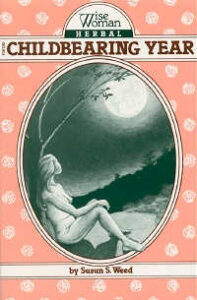
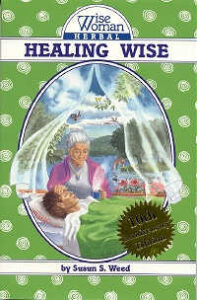

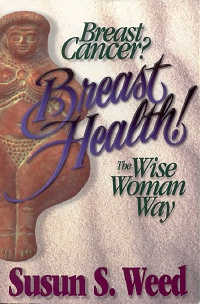
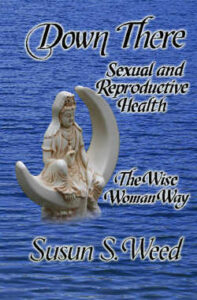
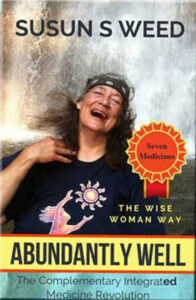



0 Comments